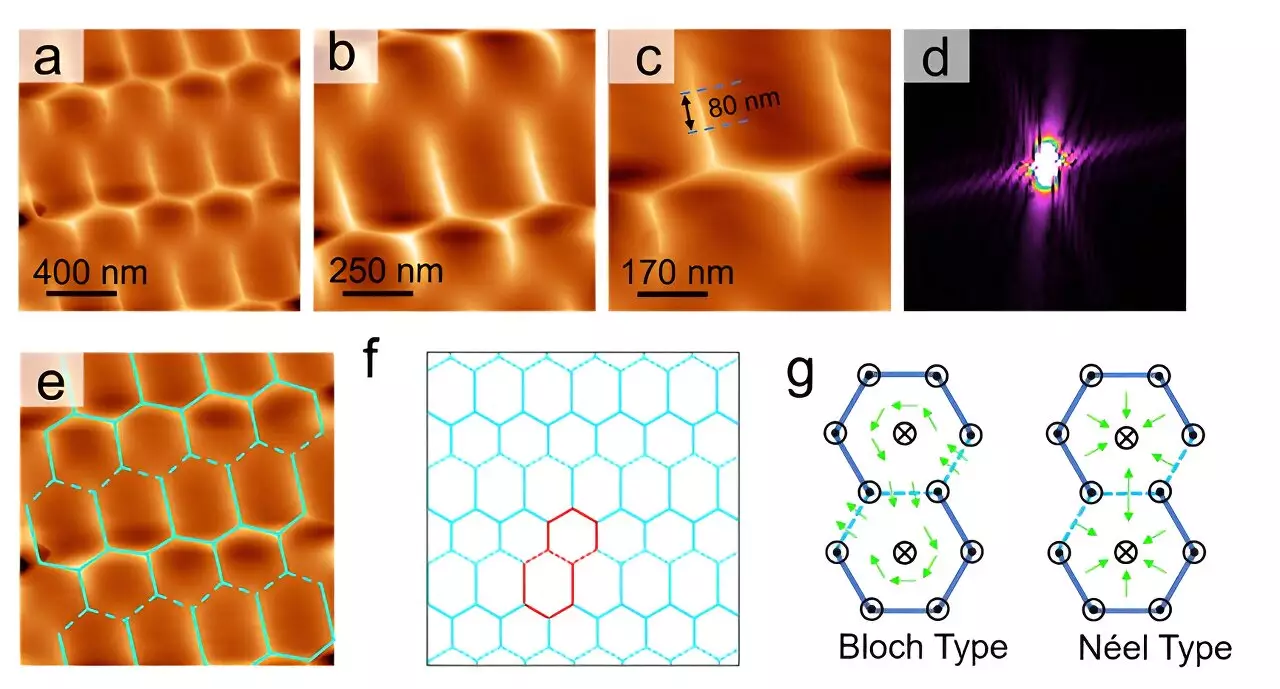Kagome lattices have recently emerged as fascinating subjects within condensed matter physics. These structures showcase an intricate arrangement of atoms that leads to unique electronic behaviors, including Dirac points and flat bands. Such characteristics suggest they might hold crucial insights into high-temperature superconductivity, as well as potential applications in quantum computing. Understanding how the internal arrangements of electrons relate to these lattices remains a pivotal question in advancing material science and physics.
A pioneering study conducted by a joint research group from China has made significant strides in unraveling the magnetic properties intrinsic to kagome lattices. Utilizing advanced techniques like magnetic force microscopy (MFM) and electron paramagnetic resonance spectroscopy, this research provides a deeper understanding of these intricate magnetic structures. The study, led by Prof. Lu Qingyou from the Hefei Institutes of Physical Science in collaboration with Prof. Xiong Yimin of Anhui University, meticulously investigated the kagome Fe3Sn2 single crystal to reveal a previously unobserved magnetic configuration.
The research uncovered a novel lattice-modulated magnetic arrangement characterized by a broken hexagonal structure. This peculiar formation arises from the interplay between the hexagonal symmetry of the lattice and the uniaxial magnetic anisotropy inherent to the material. Such a discovery is monumental as it confirms the existence of topologically broken spin configurations, an area that has remained largely elusive in previous studies. It also reinforces the complex relationship between a crystal’s electronic properties and its magnetic behavior.
An essential aspect of this research involved revising earlier interpretations concerning the magnetic transitions of Fe3Sn2. Previously thought to undergo a first-order transition, the findings denote a second-order or weak first-order transition instead. This revelation significantly alters the understanding of the material’s low-temperature magnetic state, which is now characterized as an in-plane ferromagnetic state. Such insights contribute to refining the magnetic phase diagram for Fe3Sn2, providing a clearer picture of its magnetic landscape.
Implications for Future Research and Technology
The implications of these findings extend beyond theoretical insights. By establishing the existence of significant out-of-plane magnetic components at lower temperatures, the research opens avenues for further exploration of topological magnetic structures. Additionally, through the Kane-Mele model, the team provides a comprehensive explanation for the opening of the Dirac gap at low temperatures, challenging previous notions that linked this phenomenon to skyrmion formation.
This groundbreaking research not only unravels the complexities of intrinsic magnetic structures within kagome lattices but also sets the stage for future advancements in quantum computing and superconductivity. The findings underscore the necessity of continued exploration in these areas, propelling both scientific inquiry and technological innovation forward.


Leave a Reply